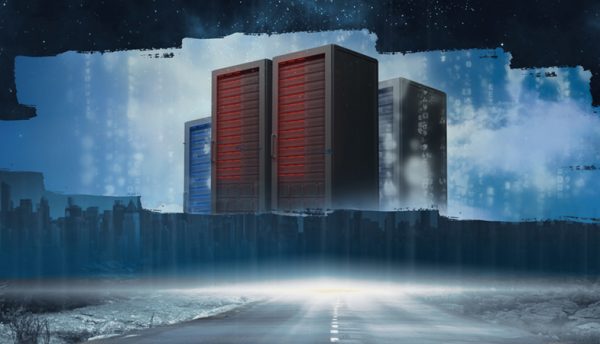We take a look at what this period of rapid technology change is set to entail for data centre managers, particularly as they aim to ensure ESG is a priority in facility management.
Change is on the horizon for all businesses, but what are the priorities, technologies and budgets that will influence this year and beyond in the data centre space?
A period of rapid technology change
Most technical professionals entered the 2020s knowing Digital Transformation was creeping up on the horizon. However, there were few who could have predicted how rapidly the IT environment would change. Faced with a complete upheaval of working models during the pandemic, businesses deployed technology that would otherwise not have been due until the middle of the decade.
This, of course, caused a range of problems, with many teams having to play catch-up. Chief among them were:
- An accelerated focus on Digital Transformation (46% of respondents reported this)
- Increased security concerns (44%)
- Increased demand for application availability (31%)
These are, by no means, new problems for data centres, but the difference is they are now growing more rapidly than before. Alongside pandemic-induced acceleration of digital technology, organisations had to speed up their Digital Transformation. As a result, demands are outstripping IT teams’ ability to deliver in many cases.
What’s most disrupting technical teams
Unsurprisingly, IT management’s core principles are repeatedly featured among the top challenges their technical teams face. For example, with security concerns prioritised, related issues like protecting the business from downtime and meeting delivery commitments are also being worked on, with 45% and 40% of respondents, respectively, reporting these as top considerations. However, these aren’t the only challenges technical teams face.
In this period of rapid change, data centres are increasingly relied upon by organisations and Internet-of-Things (IoT) ecosystems. Not only do they have many working parts that need to function to satisfy customer expectations, but they must also be operational around the clock. This requires teams to also be constantly available, in case of problems, and working to get ahead of risks.
New simulation software, like Cadence’s data centre digital twin, are key tools that will help its team to future-proof infrastructure, improve cross-functional collaboration and mitigate risk.
The capacity challenge in transformation
Two-thirds of technical professionals identified that their organisation’s Digital Transformation strategy was accelerated over the past couple of years, stemming from business needs created by the pandemic. Demand for capacity has been identified as the biggest driver of change, with over a third of technical professionals admitting that this acceleration will require them to build a new data centre.
With businesses lacking in capacity, bottlenecks have been increasing. A lack of available space was by far the most common reason (reported by 50%), but technical professions also cited thermal limitations (25%) and a lack of power (21%) as reasons.
Are data centre budgets also going through transformation?
The research uncovered that over half of technical professionals saw their budget increase over the past year. This is only set to continue, with an even higher number expecting their budget to rise over the next 12 months. Software/Technology (71%), Financial Services (70%) and Retail (70%) are the sectors most confident in a budget increase in the next 12 months.
Despite there being an upward trend, businesses are facing mixed budget availability. Regardless, all companies are trying to tighten their belts and an expedient way of doing so is making the most of current infrastructure.
Is your organisation prioritising a green data centre?
Capacity is also a critical issue for many businesses, but environmental, social and governance (ESG) policies are also re-emerging as key concerns. Respondents to the survey revealed that their priorities concerning ESG are varied:
- 43% want to reduce their power bill
- 41% include their infrastructure within the corporate ESG policy
- 38% have carbon and power usage effectiveness (PUE) targets
But regardless — the unifying factor across these is the need to cut costs. This might, however, be easier said than done and is a fine line for businesses.
Measuring success
While cost is a key concern for many businesses, it is not the only key performance (KPI) businesses take into account. Two-thirds of respondents’ top priority was IT service delivery within the higher business; reducing downtime to zero (a key metric that counts towards meeting cost-cutting objectives) was the next most important metric.
However, protecting the company from downtime is also listed as the biggest cause of sleepless nights (reported by 45%) and meeting IT service delivery commitments was the next most cited challenge (40%). The findings essentially reveal that if technical professionals meet their challenges, they will also meet their KPIs.
However, while PUE is listed as one of the top green concerns, fewer than 10% of businesses consider PUE as a metric for success. This is odd, since reducing PUE—including cooling, IT equipment and additional facility functions—directly contributes to reducing costs.
Overall, the research found that strong demand for IT services and zero downtime are battling with the increasing importance of the IT infrastructure being scrutinised in ESG policy. However, when the data is split between industries, it is clear that there is no ‘one-size-fits-all’ approach — rather, each business needs to understand their needs and how they can best meet them. A powerful tool for achieving this is the digital twin.
“Digital twins should be a key part of any data centre professional’s arsenal,” said Mark Fenton, Senior Product Marketing Manager at Cadence. “Powerful computational fluid dynamics (CFD) software seamlessly connects with DCIM, BI tools, monitoring systems, ticketing systems and a range of other functions under one roof. With this in place, users can remove the silos from their business and look at their data centre performance holistically. This will help them to understand key issues such as how to optimise their cooling management and increase energy efficiency — both of which will reduce overall costs.”
Click below to share this article







